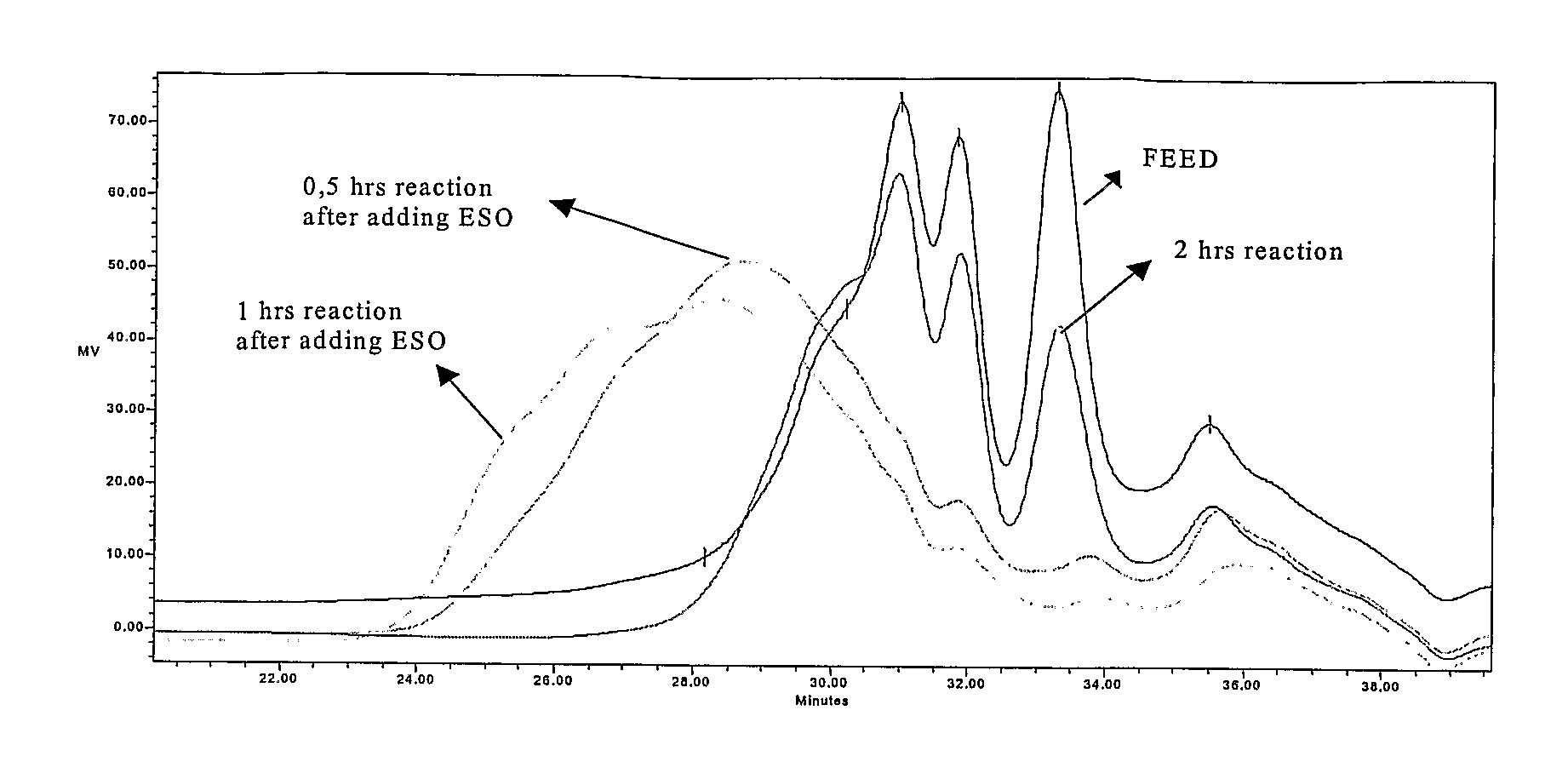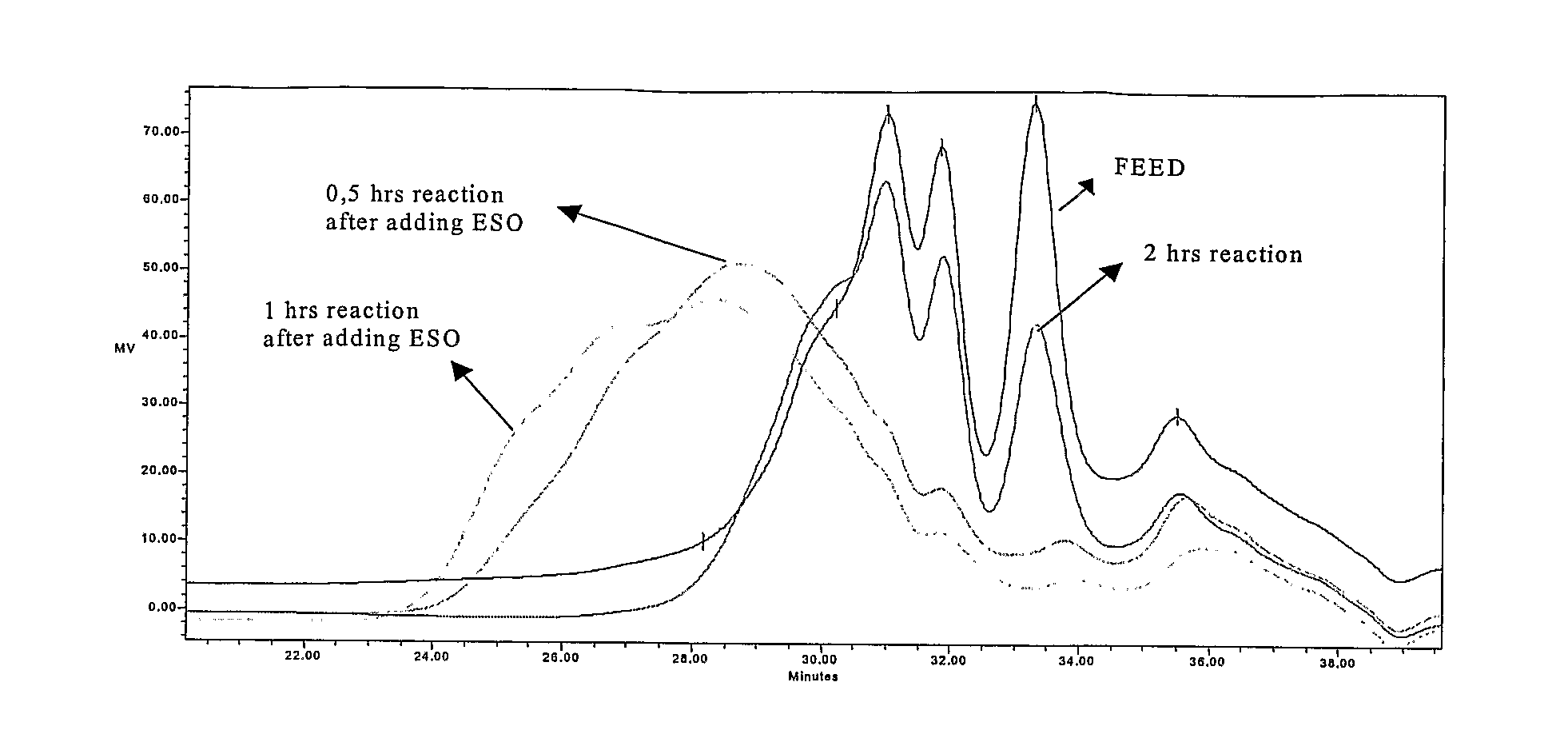Process For the Recovery of Sterols From Organic Material
a technology of organic material and sterol, which is applied in the field of recovery of sterols from organic materials, can solve the problems of less economic and environmentally friendly processes, low yield, etc., and achieve the effect of high process yield and high final sterol purity
- Summary
- Abstract
- Description
- Claims
- Application Information
AI Technical Summary
Benefits of technology
Problems solved by technology
Method used
Image
Examples
example 1
[0046]1 kg of TOP were reacted with 155 g (2.53 moles) monoethanolamine from Aldrich Chemical Co. and 10 g zinc oxide (0.12 moles) from Merck KGaA, in a 2-liter, 3-necked round bottom flask equipped with a thermometer and mechanical agitator at a temperature of 220° C. for 5 h. Then 50 g of epoxydated soy bean oil (ESO) were added to the flask, reaction temperature was maintained at 180° C. and the reaction was continued for 1 hour. The yield of sterol release—relation of free sterols in the reaction product after step a and b compared to the total amount of free and derivatized sterols in the feed—was 99.34%.
example 2
[0047]1 kg of VOD was treated with 326 g (3.1 moles) of diethyleneglycol from Aldrich Chemical Co. and 17 g of zinc oxide (0.21 moles) from Merck KGaA, in a 2-liter, 3-necked round bottom flask equipped with a thermometer and mechanical agitator at a temperature of 220° C. After 5 hours 80 g of ESO were added to the flask, reaction temperature was maintained at 180° C. and the reaction was continued for 1 hour. The yield of sterol release was 90.74%.
example 3
[0048]1 kg of TOP was reacted with 60 g (1.00 moles) of ethylenediamine from Aldrich Chemical Co. into a 2-liter, 3-necked round bottom flask equipped with a thermometer and mechanical agitator at a temperature of 220° C. for 3 h. After reaction completion 70 g of ESO were added to the flask, reaction temperature was maintained at 180° C. and the reaction was continued for 1 hour. The yield of sterol liberation was 99.7%.
PUM
| Property | Measurement | Unit |
|---|---|---|
| temperature | aaaaa | aaaaa |
| temperatures | aaaaa | aaaaa |
| temperature | aaaaa | aaaaa |
Abstract
Description
Claims
Application Information
 Login to View More
Login to View More - R&D
- Intellectual Property
- Life Sciences
- Materials
- Tech Scout
- Unparalleled Data Quality
- Higher Quality Content
- 60% Fewer Hallucinations
Browse by: Latest US Patents, China's latest patents, Technical Efficacy Thesaurus, Application Domain, Technology Topic, Popular Technical Reports.
© 2025 PatSnap. All rights reserved.Legal|Privacy policy|Modern Slavery Act Transparency Statement|Sitemap|About US| Contact US: help@patsnap.com


